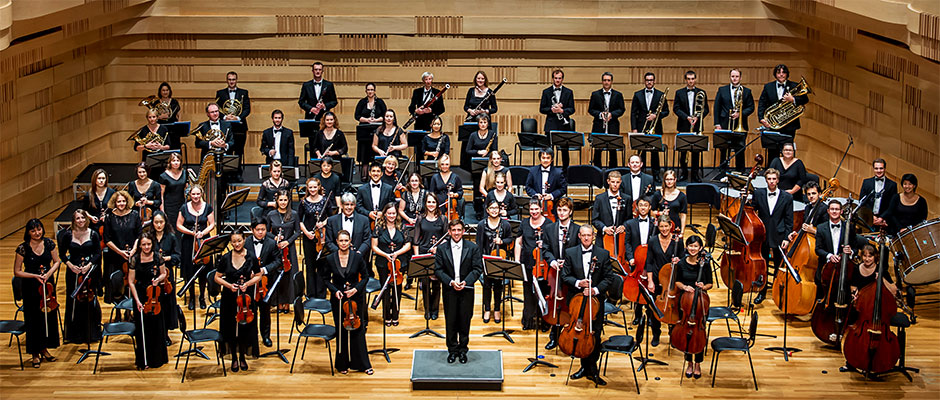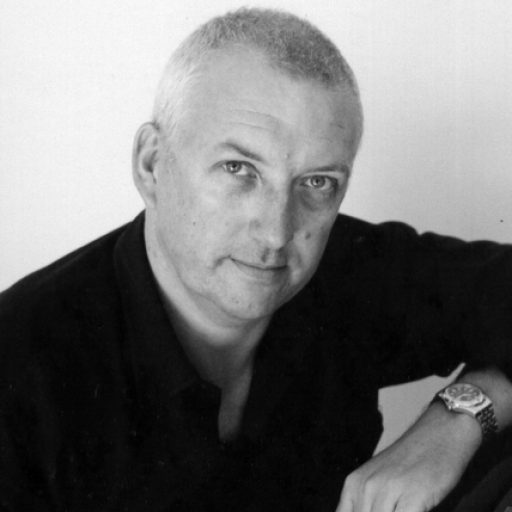(This article first appeared in the December 2014 edition of Fine Music magazine.)
Fifty years of performance for any music organisation these days is worth popping the champagne. For the Willoughby Symphony Orchestra, 2015 will potentially be its very best year with a bumper crop of outstanding artists.
Considered the best regional orchestra, the WSO has won Orchestra Australia’s “Best Community Orchestra” award for two consecutive years (2005-06).
 Beginning in 1965 as a novice orchestra, formed by the late Albert Keats, the organisation started its life playing at the Chatswood Town Hall. Whilst performance venues have come and gone (the Town Hall was demolished and rebuilt in 1972 and re-branded as the Willoughby Civic Centre), the orchestra has gone from strength to strength, and now is resident at the architecturally and acoustically superb Concert Hall at The Concourse.
Beginning in 1965 as a novice orchestra, formed by the late Albert Keats, the organisation started its life playing at the Chatswood Town Hall. Whilst performance venues have come and gone (the Town Hall was demolished and rebuilt in 1972 and re-branded as the Willoughby Civic Centre), the orchestra has gone from strength to strength, and now is resident at the architecturally and acoustically superb Concert Hall at The Concourse.
Since its beginnings, a subscription series landed the orchestra on its financial feet, with droves of subscribers from the North Shore and elsewhere, helping to fund its survival.
Part of its survival is due to the Willoughby City Council, one of the few local governments in the country supporting a professional symphony orchestra, and as a result, the orchestra brings a real cultural vitality and artistic maturity to the region.
Audiences over the decades have come to know that attending a WSO concert is as striking and satisfying as many of the other professional orchestras around the nation.
Although community based, the WSO has attracted over 200 instrumentalists, 140 singers and many of the leading conductors in its annual series of concerts.
The many renowned conductors who have worked with the WSO reads like a Who’s-Who of Australian musical elite: Richard Gill, Simon Kenway, Roland Peelman, Wilfred Lehmann, Clive Pascoe, Leonard Dommett OBE, Johannes Fritsch, Tommy Tycho, Myer Friedman, John Hopkins and Andrew Greene.
The internationally renowned Australian conductor, Patrick Thomas AM MBE reminisced about his conducting of the orchestra during the period 1981-2002. Recalling its earlier years, however when the orchestra got started, WSO functioned really in the mould of a cottage industry with many community volunteers working hard behind the scenes to produce a programme of concerts.
Mr Thomas was influenced by Darryl Miley (a programme controller at the ABC at the time), who convinced him to find time in his busy international career to conduct at Willoughby. He remembers fondly conducting some powerful concerts, such as the first time the orchestra played Mahler’s First Symphony.
“A lot of orchestras around the world are going to the wall”, said Mr Thomas, believing that “a first class regional orchestra such as WSO fills a void”.
It helps to build community, and this great conductor believes that the WSO has a great future ahead of it, providing it retains a strong financial base.
“It is so important for council and private enterprise to keep its financial support up for the orchestra. When this happens, the orchestra will deliver on its musical excellence,” said Mr Thomas.
Along with a lineup of wonderful conductors gracing the stage with the orchestra, there has been a huge array of leading soloists that have performed, including Donald Hazelwood, Carl Pini, Simon Tedeschi, Jane Rutter, Tamara Anna Cislowska, Jane Edwards, Deborah de Graaf, Geoffrey Chard, Lauris Elms, Marilyn Richardson, Charmian Gadd and Shu-Cheen Yu, to name a few.
As one looks back over the five decades, the WSO has commissioned new music, recorded, broadcast, and performed live concerts. It has been at the heart of the local community and made its mark on the national scene as well. In the Bicentennial year (1988), the orchestra commissioned Wilfred Lehmann to compose a Festival Overture.
Whilst much of its past repertoire featured the great symphonies, there were many concerts which also included oratorios, masses, requiems and operatic works, requiring a Symphony Chorus. This came about when the Northside Choral Society merged with the WSO in 1973, and went on to produce many a fine choral and orchestral concert. Most notably was the live recording, made in 2002 of Elgar’s Dream of Gerontius.
Most recently, the orchestra has worked with the English National Ballet in its tour to Sydney last year. The ballet company’s Principal Conductor, Gavin Sutherland was glowing in his praise of the WSO.
“Not only is it a great-sounding ensemble, but in this discipline of ballet accompaniment, which demands great focus and pinpoint accuracy and interpretation of the conductor’s (and, ultimately, the dancer’s) work, they have far exceeded any expectation and have the right to list this skill as a natural and instinctive one. In my twenty years’ experience of ballet conducting the WSO is easily comparable with the specialist orchestras of the ballet houses like Covent Garden, Stuttgart and New York.”
Proceeding from this extraordinary praise, it is with great expectation that audiences will greet the orchestra’s 2015 programme, dubbed as “electrifying intensity”.
In an ambitious offering, the WSO is embarking on a large-scale performance programme. A Grand Opera Gala opens the series in February with the Symphony Chorus, and soprano Regina Daniel, tenor Matthew Reardon and baritone Alexander Knight singing arias, duets, trios and choruses from the great operas of La Boheme, Madame Butterfly, Tosca, The Magic Flute, Carmen, Die Fledermaus, Lohengrin, Nabucco, Aida, La Traviata, The Barber of Seville, The Pearl Fishers, The Tales of Hoffman and The Merry Widow.
Regina Daniel was the 2014 winner of the prestigious Dame Joan Sutherland Scholarship and a graduate of Sydney Conservatorium. She was Young Artist for Pacific Opera and is an award winning coloratura soprano, who has worked with some great singers, such as Lisa Gasteen.
Like Regina, Alexander Knight is a graduate of the Sydney Conservatorium Opera School and has sung with the Sydney Symphony Orchestra, as well as appeared in opera and concert work as a baritone.
Matthew Reardon has sung with WA Opera and Opera Australia, and was a graduate of WAAPA. The winner of many operatic scholarships, Matthew is an up and coming singer for whom to look out.
In May, the second concert in the series takes audiences on a journey to the United States, with favourites from Bernstein (Overture and Symphonic Dances from West Side Story) and Copland (Fanfare for the Common Man). Whilst these works are well-known to most audiences, another work (Eric Korngold’s Violin Concerto) will be a new experience.
Korngold is perhaps best known for his lush film score to Errol Flynn’s captivating Robin Hood, and his Violin Concerto is quite incredible for its coupling of Hollywood heroism, Viennese charm and European elegance. When first released, the work was championed by the legendary Jascha Heifetz, and in this performance by the WSO it will feature the outstanding young Australian violinist, Doretta Balkizas, fresh from triumphant appearances with the Melbourne Symphony Orchestra.
One of the truly inspirational elements of the WSO is its Composer-in-Residence programme. 2015 sees the acclaimed Australian composer, Elena Kats-Chernin take up this mantle.
Born in Uzbekistan, and after studying in Moscow, Sydney and Hanover, Kats-Chernin is regarded as one of the leading lights in the world of new music today. Her styles almost defy categorisation, as her works cross a range of styles, from rags to operas and full-scale symphonies.
Her music has been heard at the 2000 Sydney Olympic Games, the 2003 Rugby World Cup, and her famous and well-loved Eliza’s Aria, from her ballet score Wild Swans, was used by Lloyd Banks’s 2007 advertising campaign.
A new work by Kats-Chernin (inspired by the music of Astor Piazzolla), Recollecting ASTORoids, will be premiered by the WSO in its June series, and claims to transform the symphony orchestra into a giant tango band.
Australian pianist Andrea Lam will also perform Mozart’s Piano Concerto in C (the memorable work now always linked with the film Elvira Madigan), with Dvorak’s Sixth Symphony bringing the orchestra’s colours to the forefront.
The major work for the Symphony Choir will be Carl Orff’s Carmina Burana, adding its massive choral impact to the orchestra in its August series. Sitting next to the Orff will be another powerful and energetic work, Stravinsky’s Firebird Suite.
Two new works will feature in September, with a return of Elena Kats-Chernin’s evocative piece titled Mythic, and a work by the (yet unknown) winner of the Fine Music Young Composer Award.
As well, audiences will love the sonorous lyricism in Schumann’s Cello Concerto (with soloist Ruben Palma) and Beethoven’s Symphony No 8.
Ending the concert series for the year is a spectacular recreation of the visionary Sir Henry Wood’s Last Night of the Proms, in which the orchestra and chorus will have listeners believing they are at the Royal Albert Hall in London. Typically, the thrilling masterpieces of Elgar (Land of Hope and Glory), Parry (Jerusalem), Handel (Zadok the Priest and Hallelujah Chorus), and Walton (Crown Imperial) will be heard, culminating with the 1812 Overture by Tchaikovsky.
And to finish what will be a remarkable year in the life of the orchestra, it will conclude its celebrations with The Magic of Christmas.
Of course, this series doesn’t just happen. It is the result of a hard working team, who under the direction of the orchestra’s Chief Conductor and Artistic Director, Nicholas Milton will create a year of extraordinary musical achievement.
“I often reflect on the miraculous organisms that are orchestras – humans getting together to create a moment in time of absolutely stunning beauty,” said Dr Milton.
“It’s quite remarkable when you think about it, and I often think about this tiny miracle when I am privileged enough to stand in front of my fellow musicians in the WSO.”
The transition of the orchestra from suburban entity to major arts body replicates its move from the former Chatswood Town Hall to The Concourse, Sydney’s newest concert hall. And just so is its stunning impact to the vibrant orchestral life of Sydney, as the WSO has continued to inspire and engage its audiences.

I knew Albert Keats personally. I was 8. He was 60 or 70. He played piano at Pamela Shield’s Ballet School in Lane Cove where I attended. We were very close. Letters, birthday cards, phone calls. He never married but lived with his sister in Killara (?) I believe. I still have original manuscripts of music written by Albert for me. When he played at Chatswood Town Hall one time, he organized a special place for me to watch. Up behind the stage. I remember his long silver hair as it touched his collar, and the kisses he blew to me after the completion of the concert. He was a very dear and sweet man. I treasure these memories.